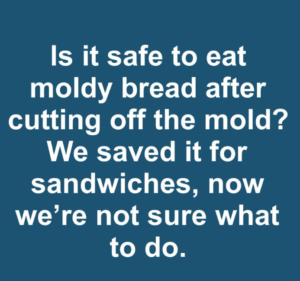What to Do When You Find Mold on Bread
We’ve all faced it: reaching for a loaf of bread, only to find the green or white fuzz of mold. The immediate question is, can you simply cut off the moldy part and eat the rest? While it may seem wasteful to toss the entire loaf, it’s important to consider health risks and avoid unnecessary waste.
What Is Mold, and How Does It Grow?
Mold is a fungus that thrives in warm, damp environments. It reproduces by releasing spores into the air, which can land on food and begin to grow. Bread, with its moisture and nutrients, is a prime breeding ground for mold. Once it starts growing, it can spread quickly, often beyond what is visible.
Types of Mold on Bread
Common molds on bread include Penicillium, Aspergillus, Rhizopus, and Cladosporium. These molds appear in colors like green, white, black, or blue. While some molds are harmless, others can produce mycotoxins—harmful compounds that pose health risks if eaten.

Can You Safely Cut Off Mold and Eat the Rest?
It might seem safe to cut away the moldy part, but this is not recommended. Mold can penetrate deeper into the bread than you might see, and spores can spread throughout the loaf. Therefore, even if you remove the moldy section, the rest of the bread may still be contaminated.
Expert Opinions
Food safety experts, including those from the USDA and FDA, strongly advise against eating moldy bread. They emphasize that the risks of consuming mold outweigh the benefits of saving it. Experts recommend discarding the entire loaf to avoid potential health issues.
Alternatives to Eating Moldy Bread
Instead of eating moldy bread, consider using it for non-food purposes. You can compost it, which is environmentally friendly. Alternatively, use it as bird feed—just make sure the mold isn’t harmful to birds. Always check that the bread is safe for wildlife consumption.
Conclusion: Make the Safe Choice
When it comes to moldy bread, it’s best to discard it. Though it may seem wasteful, the health risks are not worth taking. By understanding mold growth and taking preventive steps, you can avoid this issue in the future, ensuring your health and safety come first.

